Impacts of Tariffs on Energy Conscious Behavior with Respect to Household Attributes in Saudi Arabia
Abstract
1. Introduction
2. Literature Review
2.1. Non-Economic Factors
2.2. Economic Factors
3. Study Area: Saudi Arabia
3.1. Energy Efficiency Regulations
3.2. Energy Efficient Labeling
3.3. Electricity Tariffs/Block Rate Structure
4. Methodology
- Pre-revised tariff year (2016 and 2017);
- Revised tariff enforcement year (2018); and
- Post-revised tariff year (2019 and 2020).
Extreme Learning Machine (ELM)
5. Study Results
5.1. Paired Sample t-Test
5.2. Modeling the Consumption Data
5.3. Data Modeling and Sensitivity Analysis Using ELM
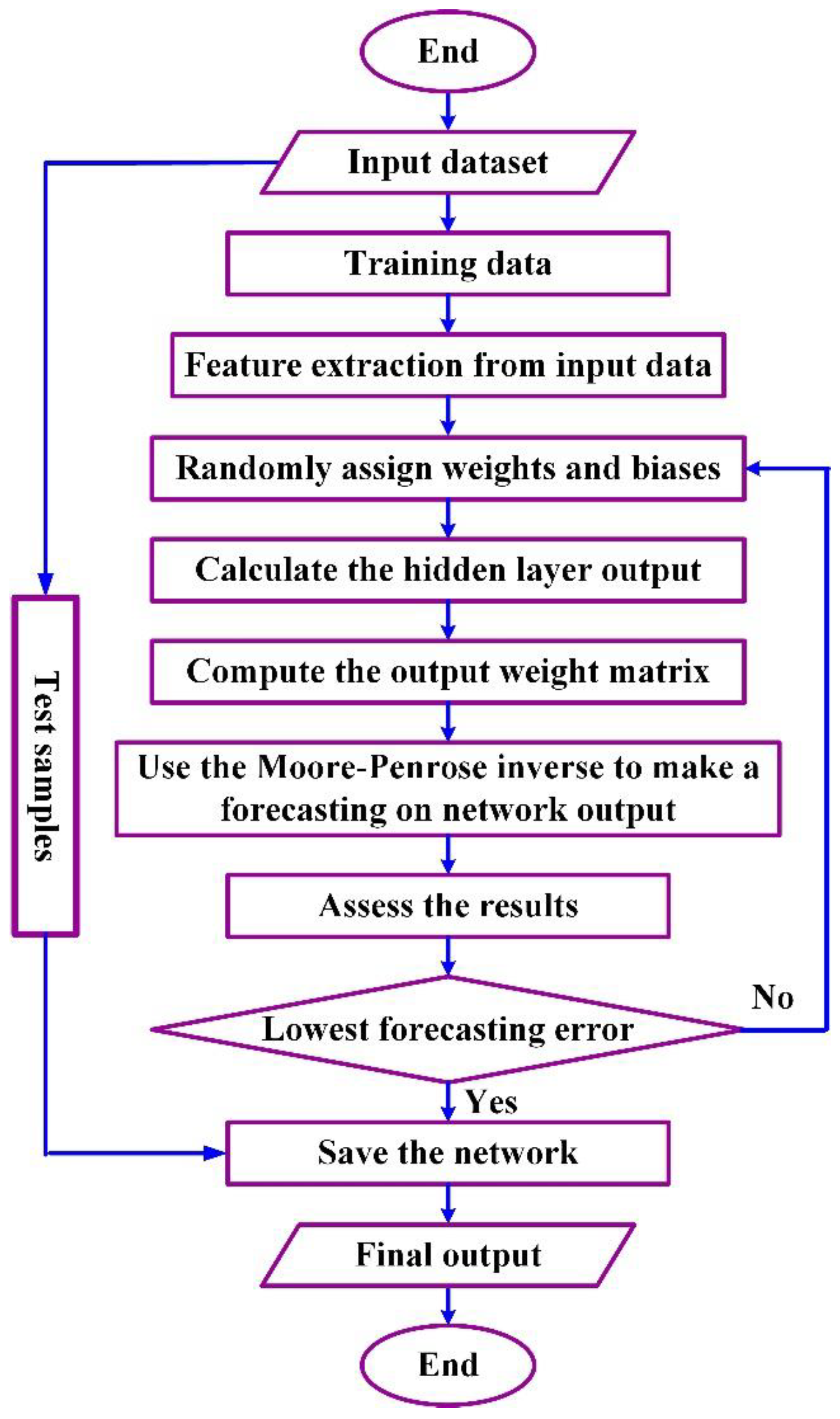
6. Discussion
7. Conclusions
Author Contributions
Funding
Data Availability Statement
Acknowledgments
Conflicts of Interest
References
- Almasri, R.A.; Alshitawi, M.S. Electricity consumption indicators and energy efficiency in residential buildings in GCC countries: Extensive review. Energy Build. 2021, 255, 111664. [Google Scholar] [CrossRef]
- Nahiduzzaman, K.M.; Aldosary, A.S.; Abdallah, A.S.; Asif, M.; Kua, H.W.; Alqadhib, A.M. Households energy conservation in Saudi Arabia: Lessons learnt from change-agents driven interventions program. J. Clean. Prod. 2018, 185, 998–1014. [Google Scholar] [CrossRef]
- Alyousef, Y.; Varnham, A. Saudi Arabia’s National Energy Efficiency Programme: Description, achievements and way forward. Int. J. Low-Carbon Technol. 2010, 5, 291–297. [Google Scholar] [CrossRef]
- Al-Tamimi, N. A state-of-the-art review of the sustainability and energy efficiency of buildings in Saudi Arabia. Energy Effic. 2017, 10, 1129–1141. [Google Scholar] [CrossRef]
- Krarti, M.; Dubey, K.; Howarth, N. Evaluation of building energy efficiency investment options for the Kingdom of Saudi Arabia. Energy 2017, 134, 595–610. [Google Scholar] [CrossRef]
- Alaidroos, A.; Krarti, M. Optimal design of residential building envelope systems in the Kingdom of Saudi Arabia. Energy Build. 2015, 86, 104–117. [Google Scholar] [CrossRef]
- AlHashmi, M.; Chhipi-Shrestha, G.; Nahiduzzaman, K.M.; Hewage, K.; Sadiq, R. Framework for Developing a Low-Carbon Energy Demand in Residential Buildings Using Community-Government Partnership: An Application in Saudi Arabia. Energies 2021, 14, 4954. [Google Scholar] [CrossRef]
- AlHashmi, M.; Chhipi-Shrestha, G.; Ruparathna, R.; Nahiduzzaman, K.M.; Hewage, K.; Sadiq, R. Energy performance assessment framework for residential buildings in Saudi Arabia. Sustainability 2021, 13, 2232. [Google Scholar] [CrossRef]
- Alrashed, F.; Asif, M. Trends in Residential Energy Consumption in Saudi Arabia with Particular Reference to the Eastern Province. J. Sustain. Dev. Energy Water Environ. Syst. 2014, 2, 376–387. [Google Scholar] [CrossRef]
- Moradzadeh, A.; Mansour-Saatloo, A.; Mohammadi-Ivatloo, B.; Anvari-Moghaddam, A. Performance evaluation of two machine learning techniques in heating and cooling loads forecasting of residential buildings. Appl. Sci. 2020, 10, 3829. [Google Scholar] [CrossRef]
- Al-Homoud, M.S.; Krarti, M. Energy efficiency of residential buildings in the kingdom of Saudi Arabia: Review of status and future roadmap. J. Build. Eng. 2021, 36, 102143. [Google Scholar] [CrossRef]
- Ouda, O.K.M.; El-Nakla, S.; Yahya, C.B.; Peterson, H.; Ouda, M. Energy Conservation Awareness among Residential Consumers in Saudi Arabia. Int. J. Comput. Digit. Syst. 2017, 6, 349–355. [Google Scholar]
- Saudi Electricity Company (SEC). Consumption Tariff; Saudi Electricity Company: Riyadh, Saudi Arabia, 2017. [Google Scholar]
- Albatayneh, A.; Juaidi, A.; Abdallah, R.; Peña-Fernández, A.; Manzano-Agugliaro, F. Effect of the subsidised electrical energy tariff on the residential energy consumption in Jordan. Energy Rep. 2022, 8, 893–903. [Google Scholar] [CrossRef]
- Zhang, S.; Lin, B. Impact of tiered pricing system on China’s urban residential electricity consumption: Survey evidences from 14 cities in Guangxi Province. J. Clean. Prod. 2018, 170, 1404–1412. [Google Scholar] [CrossRef]
- Reiss, P.C.; White, M.W. What changes energy consumption? Prices and public pressures. RAND J. Econ. 2008, 39, 636–663. [Google Scholar] [CrossRef]
- Kollmuss, A.; Agyeman, J. Mind the Gap: Why do people act environmentally and what are the barriers to pro-environmental behavior? Environ. Educ. Res. 2002, 8, 239–260. [Google Scholar] [CrossRef]
- Clark, C.F.; Kotchen, M.J.; Moore, M.R. Internal and external influences on pro-environmental behavior: Participation in a green electricity program. J. Environ. Psychol. 2003, 23, 237–246. [Google Scholar] [CrossRef]
- Liu, Q. A multilevel analysis of determinants of pro-environmental behavior (PEB) in China a case from Tianjin. In Proceedings of the 2010 4th International Conference on Bioinformatics and Biomedical Engineering (iCBBE 2010), Chengdu, China, 18–20 June 2010. [Google Scholar] [CrossRef]
- Prabatha, T.; Hager, J.; Carneiro, B.; Hewage, K.; Sadiq, R. Analyzing energy options for small-scale off-grid communities: A Canadian case study. J. Clean. Prod. 2020, 249, 119320. [Google Scholar] [CrossRef]
- Du, J.; Pan, W. Examining energy saving behaviors in student dormitories using an expanded theory of planned behavior. Habitat Int. 2021, 107, 102308. [Google Scholar] [CrossRef]
- Miao, L.; Wei, W. Consumers’ pro-environmental behavior and the underlying motivations: A comparison between household and hotel settings. Int. J. Hosp. Manag. 2013, 32, 102–112. [Google Scholar] [CrossRef]
- Kennedy, E.H.; Kmec, J. Reinterpreting the gender gap in household pro-environmental behaviour. Environ. Sociol. 2018, 4, 299–310. [Google Scholar] [CrossRef]
- Musango, J.K. Household electricity access and consumption behaviour in an urban environment: The case of Gauteng in South Africa. Energy Sustain. Dev. 2014, 23, 305–316. [Google Scholar] [CrossRef]
- Aldossary, N.A.; Rezgui, Y.; Kwan, A. An investigation into factors influencing domestic energy consumption in an energy subsidized developing economy. Habitat Int. 2015, 47, 41–51. [Google Scholar] [CrossRef]
- Pothitou, M.; Hanna, R.F.; Chalvatzis, K.J. Environmental knowledge, pro-environmental behaviour and energy savings in households: An empirical study. Appl. Energy 2016, 184, 1217–1229. [Google Scholar] [CrossRef]
- Wood, G.; Newborough, M. Dynamic energy-consumption indicators for domestic appliances: Environment, behaviour and design. Energy Build. 2003, 35, 821–841. [Google Scholar] [CrossRef]
- Winett, R.A.; Hatcher, J.W.; Fort, T.R.; Leckliter, I.N.; Love, S.Q.; Riley, A.W.; Fishback, J.F. The effects of videotape modeling and daily feedback on residential electricity conservation, home temperature and humidity, perceived comfort, and clothing worn: Winter and summer. J. Appl. Behav. Anal. 1982, 15, 381–402. [Google Scholar] [CrossRef]
- Podgornik, A.; Sucic, B.; Blazic, B. Effects of customized consumption feedback on energy efficient behaviour in low-income households. J. Clean. Prod. 2016, 130, 25–34. [Google Scholar] [CrossRef]
- Abrahamse, W.; Steg, L.; Vlek, C.; Rothengatter, T. The effect of tailored information, goal setting, and tailored feedback on household energy use, energy-related behaviors, and behavioral antecedents. J. Environ. Psychol. 2007, 27, 265–276. [Google Scholar] [CrossRef]
- Katzev, R.D.; Johnson, T.R. Comparing the Effects of Monetary Incentives and Foot-in-the-Door Strategies in Promoting Residential Electricity Conservation. J. Appl. Soc. Psychol. 1984, 14, 12–27. [Google Scholar] [CrossRef]
- Hu, S.; Yan, D.; Azar, E.; Guo, F. A systematic review of occupant behavior in building energy policy. Build. Environ. 2020, 175, 106807. [Google Scholar] [CrossRef]
- Kemmelmeier, M.; Król, G.; Kim, Y.H. Values, economics, and proenvironmental attitudes in 22 societies. Cross-Cult. Res. 2002, 36, 256–285. [Google Scholar] [CrossRef]
- Chen, C.-F.; Xu, X.; Day, J.K. Thermal comfort or money saving? Exploring intentions to conserve energy among low-income households in the United States. Energy Res. Soc. Sci. 2017, 26, 61–71. [Google Scholar] [CrossRef]
- Silvi, M.; Padilla, E. Pro-environmental behavior: Social norms, intrinsic motivation and external conditions. Environ. Policy Gov. 2021, 31, 619–632. [Google Scholar] [CrossRef]
- Parzonko, A.J.; Balińska, A.; Sieczko, A. Pro-environmental behaviors of generation z in the context of the concept of homo socio-oeconomicus. Energies 2021, 14, 1597. [Google Scholar] [CrossRef]
- Reynolds, T.; Murray, B.T.; Kolodinsky, J.; Howell, J. Contrasting self-reported willingness to pay and demonstrated purchase behavior for energy-saving technologies in a small island developing state. Energy Sustain. Dev. 2015, 27, 18–27. [Google Scholar] [CrossRef]
- Moradzadeh, A.; Sadeghian, O.; Pourhossein, K.; Mohammadi-Ivatloo, B.; Anvari-Moghaddam, A. Improving residential load disaggregation for sustainable development of energy via principal component analysis. Sustainability 2020, 12, 3158. [Google Scholar] [CrossRef]
- Hu, S.; He, J.; Yang, C. Evaluating the impacts of the increasing block tariffs on residential electricity consumption in China. Sustain. Prod. Consum. 2022, 29, 180–187. [Google Scholar] [CrossRef]
- Du, G.; Lin, W.; Sun, C.; Zhang, D. Residential electricity consumption after the reform of tiered pricing for household electricity in China. Appl. Energy 2015, 157, 276–283. [Google Scholar] [CrossRef]
- Nafziger, D.L. Field experience with a peak-demand tariff at the Andhi Khola hydel and rural electrification project. Energy Sustain. Dev. 1996, 3, 19–28. [Google Scholar] [CrossRef]
- Sebitosi, A.B. Is the South African electricity tariff model conducive to an energy efficient economy? Energy Sustain. Dev. 2010, 14, 315–319. [Google Scholar] [CrossRef]
- Krstić, J.; Reljić, M.; Filipović, S. Factors influencing electricity consumption: A review of research methods. Manag. Sustain. Bus. Manag. Solut. Emerg. Econ. 2018, 24, 13–22. [Google Scholar] [CrossRef]
- Wang, Z.; Zhang, B.; Zhang, Y. Determinants of public acceptance of tiered electricity price reform in China: Evidence from four urban cities. Appl. Energy 2012, 91, 235–244. [Google Scholar] [CrossRef]
- Zhang, F. Energy price reform and household welfare: The case of Turkey. Energy J. 2015, 36, 71–95. [Google Scholar] [CrossRef]
- Wu, Y.; Zhang, L. Evaluation of energy saving effects of tiered electricity pricing and investigation of the energy saving willingness of residents. Energy Policy 2017, 109, 208–217. [Google Scholar] [CrossRef]
- Abdul Mujeebu, M.; Alshamrani, O.S. Prospects of energy conservation and management in buildings—The Saudi Arabian scenario versus global trends. Renew. Sustain. Energy Rev. 2016, 58, 1647–1663. [Google Scholar] [CrossRef]
- Alyousef, Y.; Abu-Ebid, M. Energy efficiency initiatives for Saudi Arabia on supply and demand sides. In Energy Efficiency—A Bridge to Low Carbon Economy; Morvaj, Z., Ed.; IntechOpen: Rijeka, Croatia, 2012. [Google Scholar]
- Matar, W. Beyond the end-consumer: How would improvements in residential energy efficiency affect the power sector in Saudi Arabia? Energy Effic. 2016, 9, 771–790. [Google Scholar] [CrossRef]
- Moradzadeh, A.; Mohammadi-Ivatloo, B.; Abapour, M.; Anvari-Moghaddam, A.; Gholami Farkoush, S.; Rhee, S.-B. A practical solution based on convolutional neural network for non-intrusive load monitoring. J. Ambient Intell. Humaniz. Comput. 2021, 12, 9775–9789. [Google Scholar] [CrossRef]
- Al Ghamdi, A. Data Insight: Electricity Tariff Changes in Saudi Arabia (1974–2018); KAPSARC: Riyadh, Saudi Arabia, 2019. [Google Scholar]
- Alqahtany, A.; Bin Mohanna, A. Housing challenges in Saudi Arabia: The shortage of suitable housing units for various socioeconomic segments of Saudi society. Hous. Care Support 2019, 22, 162–178. [Google Scholar] [CrossRef]
- Statista. Number of Dwellings in Saudi Arabia in 2018, by Building Type; Statista: Hamburg, Germany, 2020. [Google Scholar]
- WS. Average Weather in Dammam, Saudi Arabia; WS: Excelsion, MN, USA, 2020. [Google Scholar]
- Huang, G.-B.; Zhu, Q.-Y.; Siew, C.-K. Extreme learning machine: Theory and applications. Neurocomputing 2006, 70, 489–501. [Google Scholar] [CrossRef]
- Liu, C.; Sun, B.; Zhang, C.; Li, F. A hybrid prediction model for residential electricity consumption using holt-winters and extreme learning machine. Appl. Energy 2020, 275, 115383. [Google Scholar] [CrossRef]
- Wang, L.; Li, X.; Bai, Y. Short-term wind speed prediction using an extreme learning machine model with error correction. Energy Convers. Manag. 2018, 162, 239–250. [Google Scholar] [CrossRef]
- Wu, D.; Chen, H.; Huang, Y.; Chen, S. Online Monitoring and Model-Free Adaptive Control of Weld Penetration in VPPAW Based on Extreme Learning Machine. IEEE Trans. Ind. Inform. 2019, 15, 2732–2740. [Google Scholar] [CrossRef]
- Hossain Lipu, M.S.; Hannan, M.A.; Hussain, A.; Saad, M.H.; Ayob, A.; Uddin, M.N. Extreme learning machine model for state-of-charge estimation of lithium-ion battery using gravitational search algorithm. IEEE Trans. Ind. Appl. 2019, 55, 4225–4234. [Google Scholar] [CrossRef]
- Azizi, E.; Kharrati-Shishavan, H.; Mohammadpour Shotorbani, A.; Mohammadi-Ivatloo, B. Wind speed clustering using linkage-ward method: A case study of Khaaf, Iran. Gazi Univ. J. Sci. 2019, 32, 945–954. [Google Scholar] [CrossRef]
- Lorenzoni, L.; Cherubini, P.; Fioriti, D.; Poli, D.; Micangeli, A.; Giglioli, R. Classification and modeling of load profiles of isolated mini-grids in developing countries: A data-driven approach. Energy Sustain. Dev. 2020, 59, 208–225. [Google Scholar] [CrossRef]
- Bishop, C.M. Pattern Recognition and Machine Learning; Springer: Berlin/Heidelberg, Germany, 2006. [Google Scholar]
- Stefenon, S.F.; Grebogi, R.B.; Freire, R.Z.; Nied, A.; Meyer, L.H. Optimized Ensemble Extreme Learning Machine for Classification of Electrical Insulators Conditions. IEEE Trans. Ind. Electron. 2020, 67, 5170–5178. [Google Scholar] [CrossRef]
- GASTAT. Household Income and Expenditure Survey; GASTAT: Riyadh, Saudi Arabia, 2018. [Google Scholar]
- Felimban, A.; Prieto, A.; Knaack, U.; Klein, T.; Qaffas, Y. Assessment of Current Energy Consumption in Residential Buildings in Jeddah, Saudi Arabia. Buildings 2019, 9, 163. [Google Scholar] [CrossRef]
- Azevedo, I.; Delarue, E.; Meeus, L. Mobilizing cities towards a low-carbon future: Tambourines, carrots and sticks. Energy Policy 2013, 61, 894–900. [Google Scholar] [CrossRef]
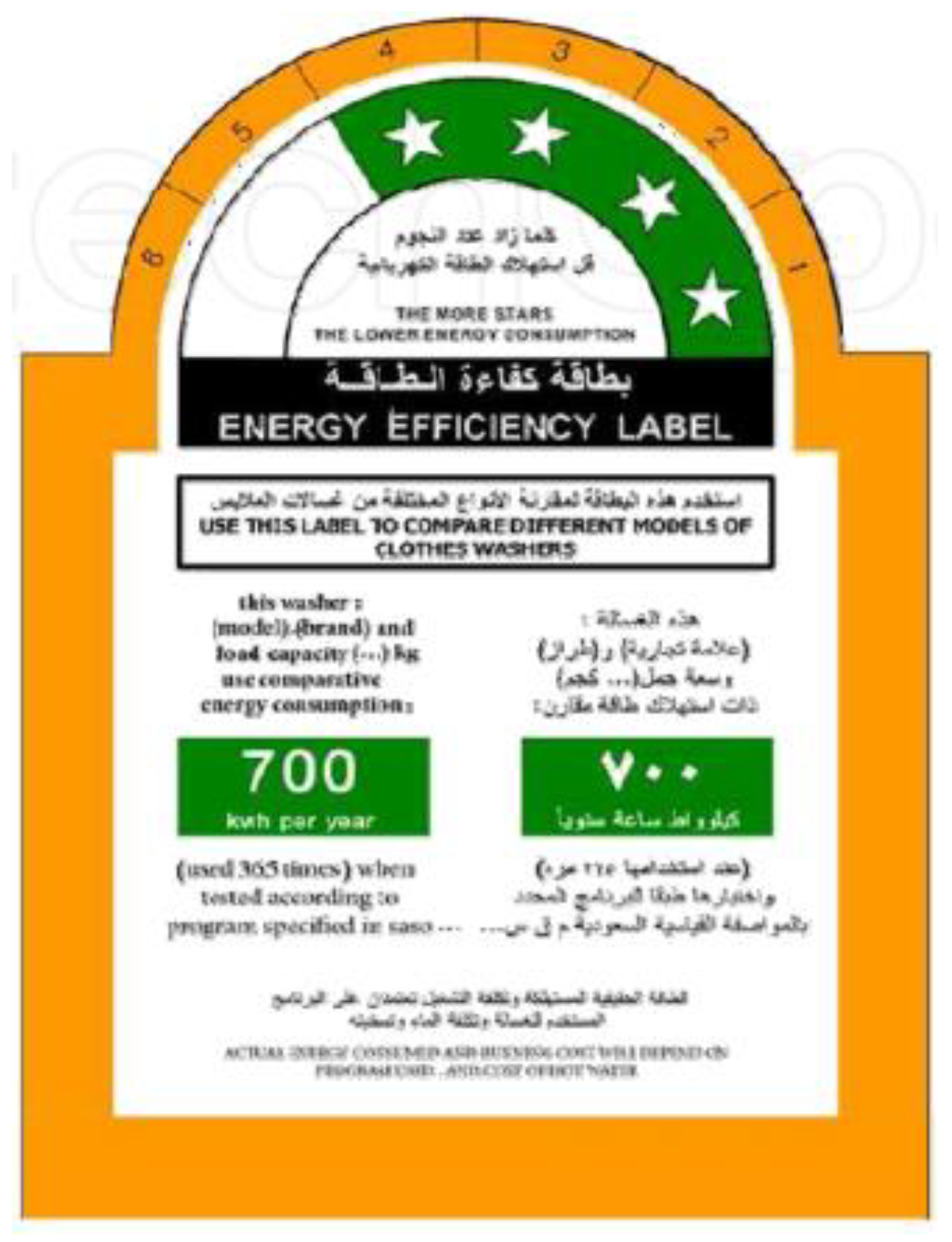
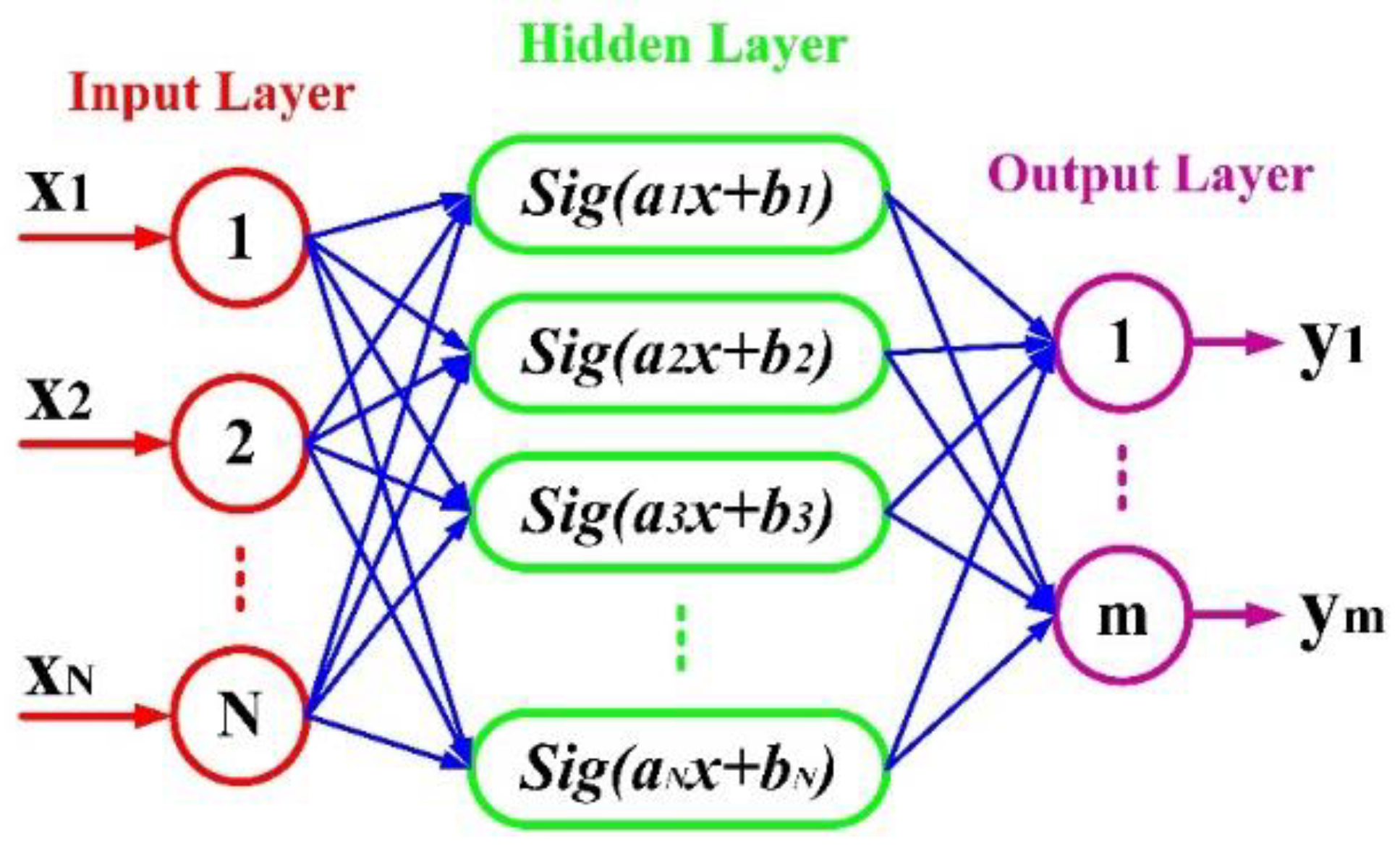

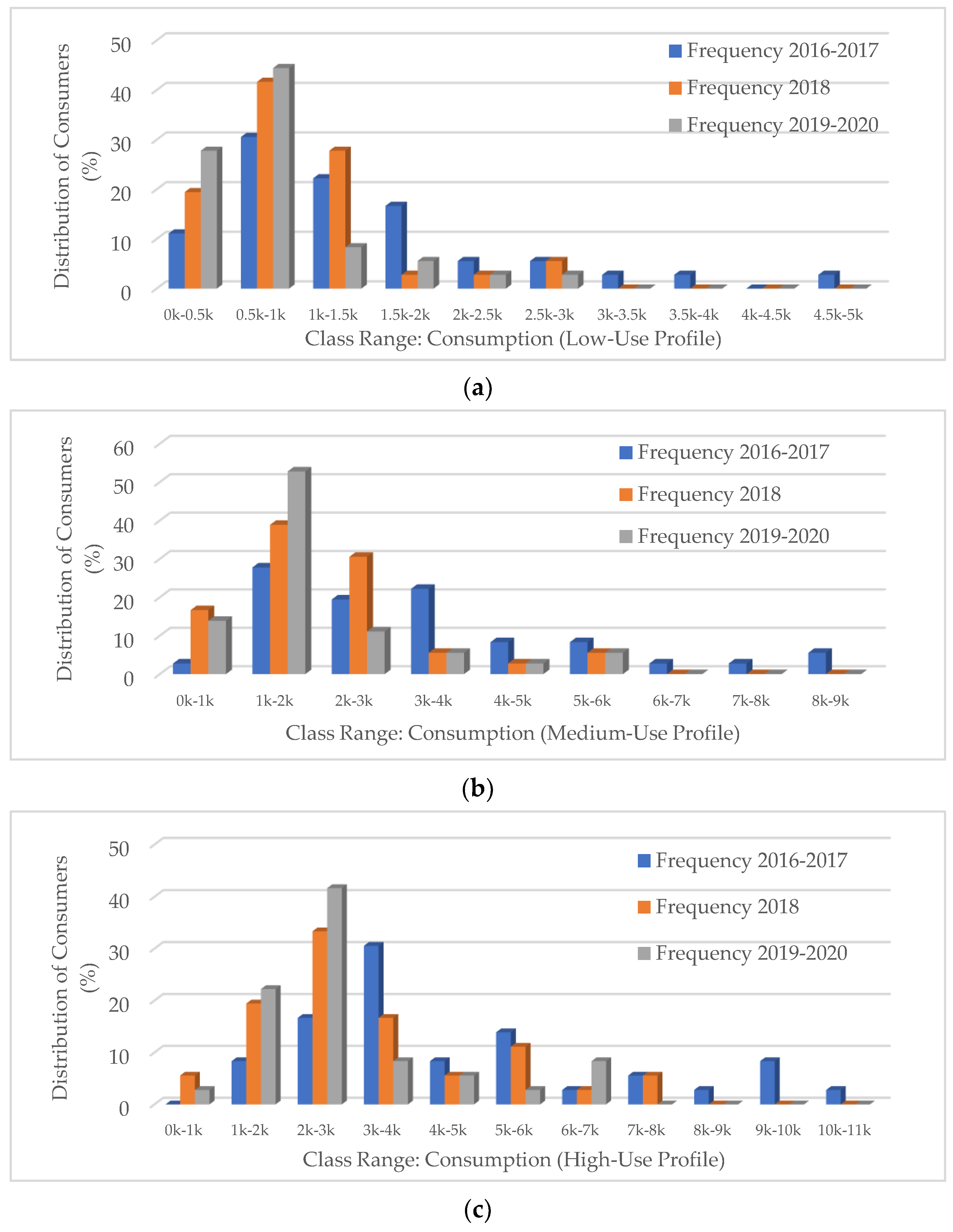
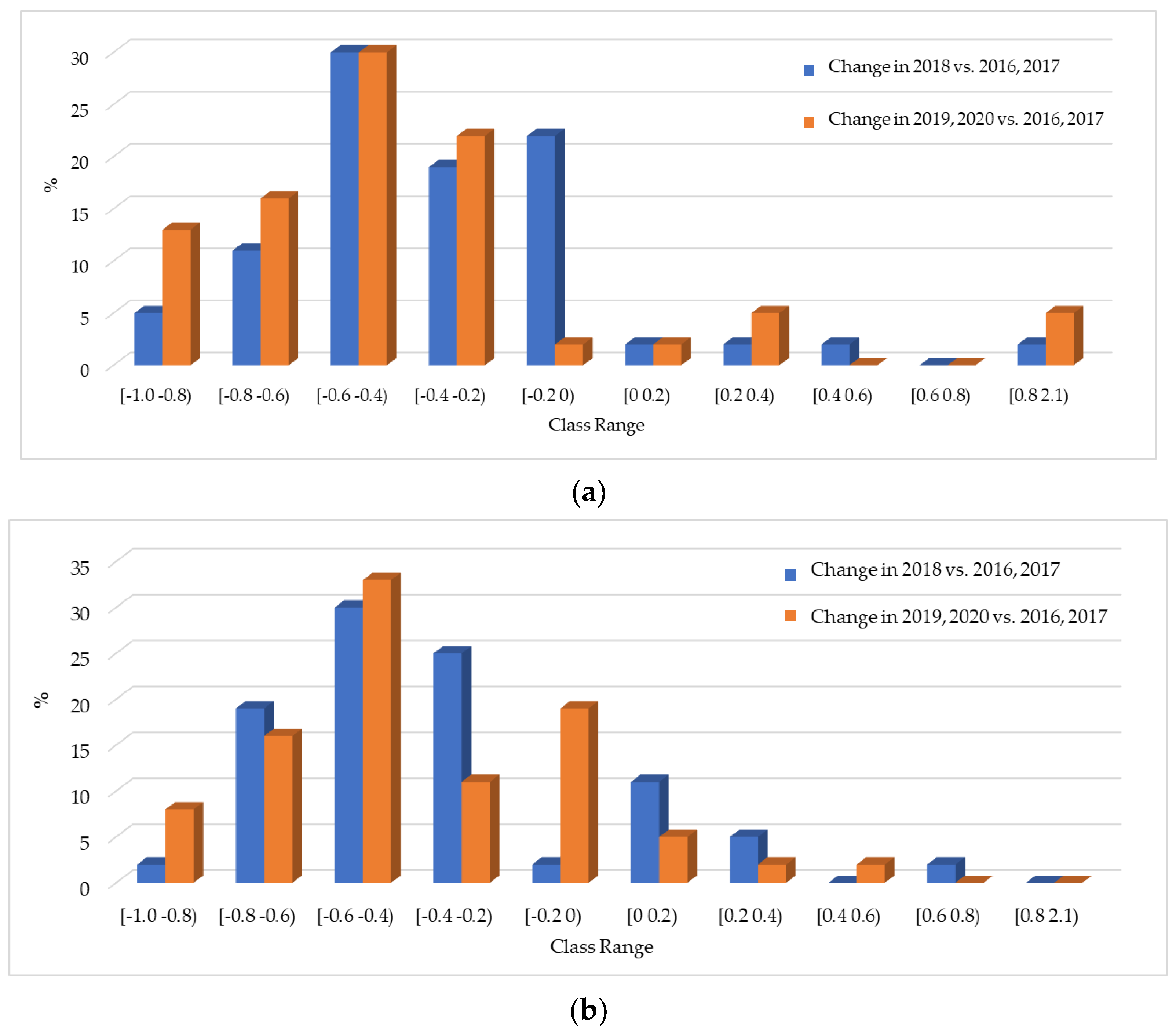
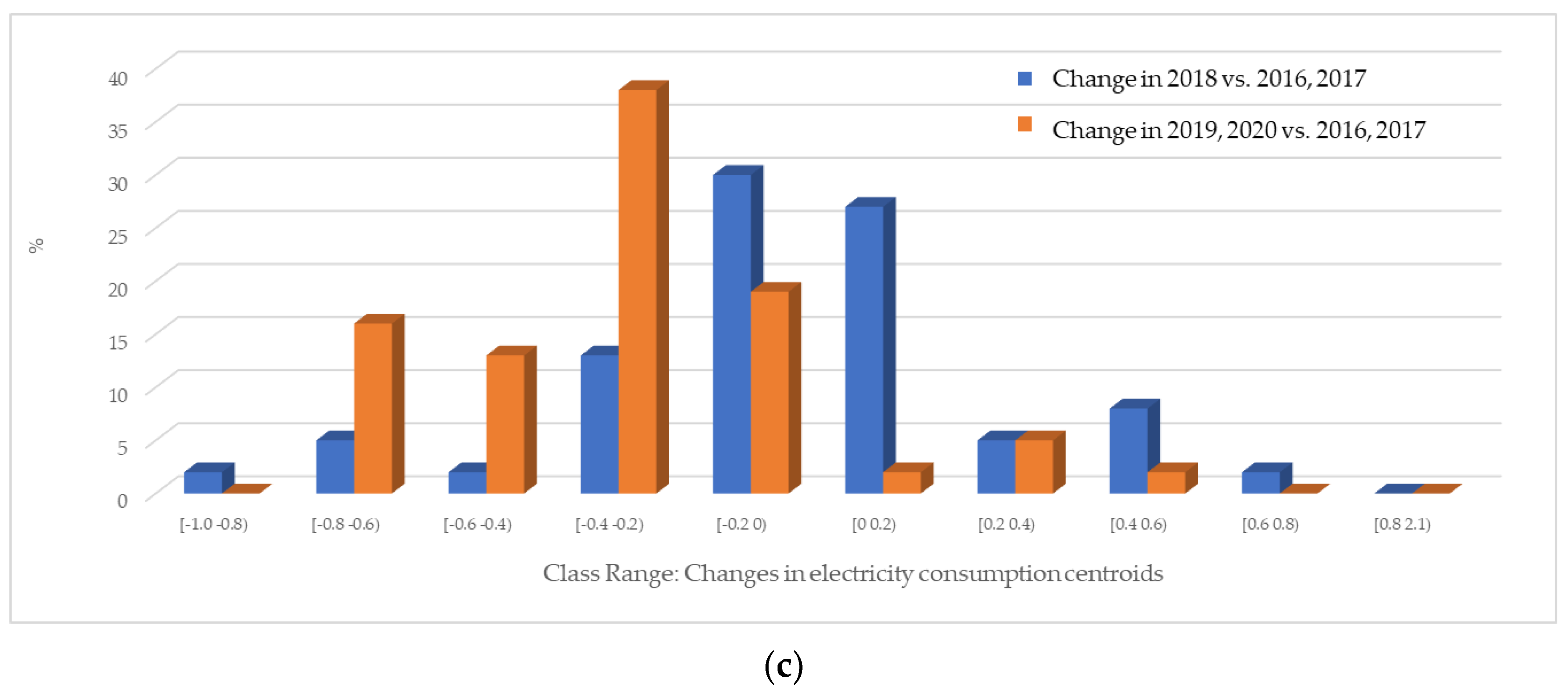
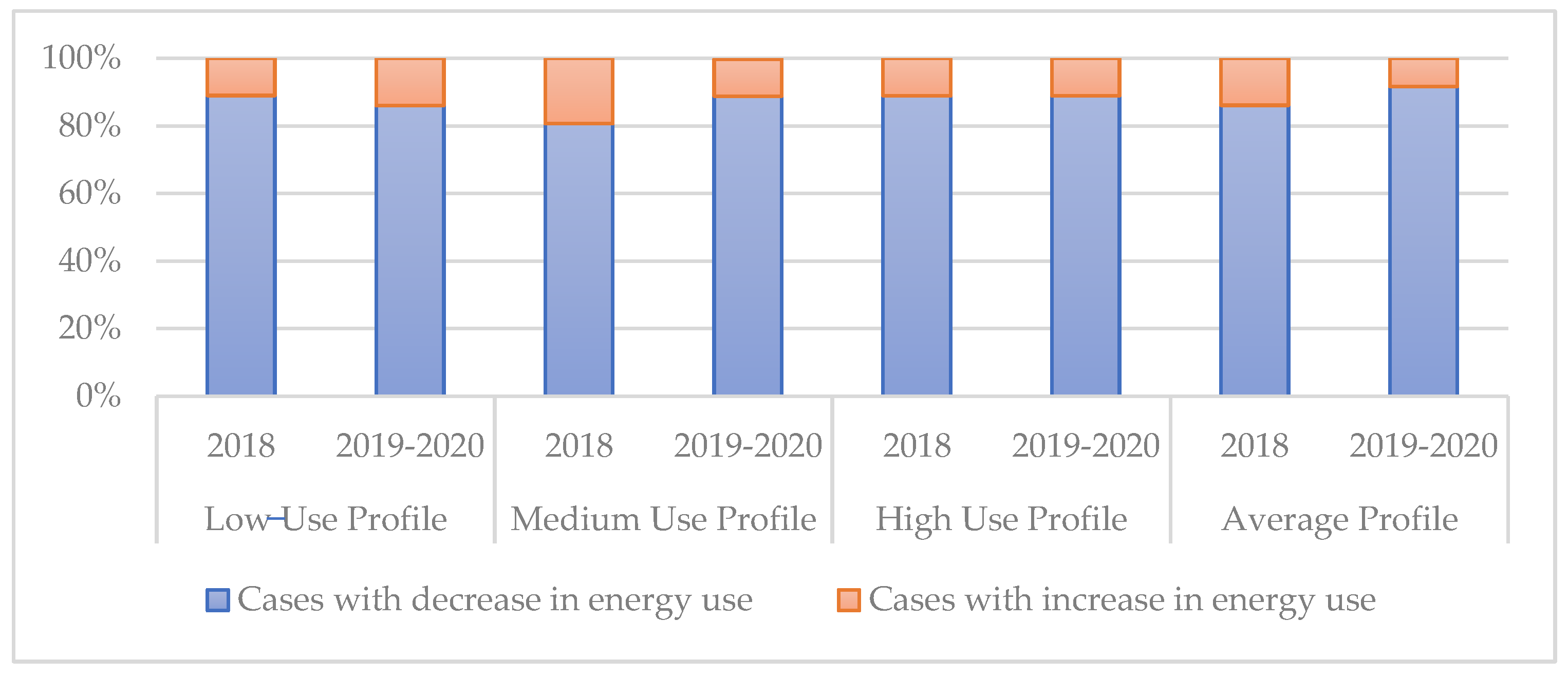



| Consumption Categories (kWh) | Residential Tariff (Halalah/kWh) | ||
|---|---|---|---|
| Before 2016 | In 2016 | In 2018 | |
| 1–1000 | 5 | 5 | 18 |
| 1001–2000 | 5 | 5 | 18 |
| 2001–3000 | 10 | 10 | 18 |
| 3001–4000 | 10 | 10 | 18 |
| 4001–5000 | 12 | 20 | 18 |
| 5001–6000 | 12 | 20 | 18 |
| 6001–7000 | 15 | 30 | 30 |
| 7001–8000 | 20 | 30 | 30 |
| 8001–9000 | 22 | 30 | 30 |
| 9001–10,000 | 24 | 30 | 30 |
| Over 10,000 | 26 | 30 | 30 |
| Overall Algorithm |
|---|
|
| Month | Jan | Feb | Mar | Apr | May | Jun | Jul | Aug | Sep | Oct | Nov | Dec |
|---|---|---|---|---|---|---|---|---|---|---|---|---|
| mean | −2 | 61 | −287 | 73 | 16 | 335 | 20 | 190 | 16 | −2 | 61 | −287 |
| p-value | 0.977 | 0.612 | 0.141 | 0.713 | 0.902 | 0.049 * | 0.866 | 0.032 * | 0.767 | 0.977 | 0.612 | 0.141 |
| Month | Jan | Feb | Mar | Apr | May | Jun | Jul | Aug | Sep | Oct | Nov | Dec |
|---|---|---|---|---|---|---|---|---|---|---|---|---|
| mean | −19 | −134 | 12 | −2 | −208 | −97 | −544 | −121 | −411 | 36 | −268 | −133 |
| p-value | 0.683 | 0.051 | 0.795 | 0.964 | 0.032 * | 0.595 | 0.004 * | 0.411 | 0.011 * | 0.751 | 0.005 * | 0.008 * |
| Month | Jan | Feb | Mar | Apr | May | Jun | Jul | Aug | Sep | Oct | Nov | Dec |
|---|---|---|---|---|---|---|---|---|---|---|---|---|
| mean | −163 | −198 | −129 | −301 | −533 | −283 | −764 | −428 | −550 | −74 | −299 | −146 |
| p-value | 0.003 * | 0.009 * | 0.018 * | 0 * | 0 * | 0.119 | 0 * | 0.007 * | 0.001 * | 0.514 | 0.002 * | 0.15 |
| Attribute | Values (Classes) | |
|---|---|---|
| 1 | Dwelling Type | (a) Apartment, (b) Apartment (shared electricity), (c) Villa (1 floor), (d) Villa (2 floors) |
| 2 | Ownership | (a) Owner, (b) Tenant |
| 3 | No. of Residents | (a) 1 to 3, (b) 4 to 6, (c) 7 to 10 |
| 4 | Year of Construction | (a) 2007 and earlier, (b) 2007 to 2010, (c) 2010 to 2014, (d) 2014 and later |
| 5 | No. of Rooms | (a) 1 or 2, (b) 3 or 4, (c) More than 4 |
| 6 | Areas of Rooms (m2) | (a) 15 to 20, (b) 25 or more |
| 7 | Area of House (m2) | (a) 51 to 100, (b) 101 to 150, (c) 151 to 200, (d) 201 to 250, (e) 400+ |
| 8 | Roof Unit | (a) Yes, it is a roof unit, (b) No, it is not a roof unit |
| 9 | AC System | (a) Split, (b) Window AC unit, (c) Both Split and Window AC unit |
| 10 | Building Material (insulation) | (a) With insulation, (b) Without insulation |
| 11 | Building Material (component) | (a) 1 component, (b) 2 components |
| 12 | Windows Proportion | (a) 12.5% or less, (b) 12.5% to 25%, (c) 25% to 50% |
| 13 | Glazing | (a) Single, (b) Double |
| 14 | Ventilation System | (a) Mechanical, (b) Natural, (c) No ventilation (N/A) |
| Low Consumption Profile | Medium Consumption Profile | High Consumption Profile | |||||||
|---|---|---|---|---|---|---|---|---|---|
| Time Interval | 2018 | 2019–2020 | 2018 | 2019–2020 | 2018 | 2019–2020 | |||
| vs. | 2016–2017 | 2018 | 2016–2017 | 2018 | 2016–2017 | 2018 | |||
| Decrease: More than 50% | 39.0% | 44.4% | 14.0% | 36.3% | 41.6% | 8.3% | 16.7% | 27.8% | 8.3% |
| Decrease: Less than 50% | 50.0% | 41.6% | 50.0% | 44.4% | 47.2% | 47.2% | 72.2% | 61.1% | 50.0% |
| Increase: Less than 50% | 8.3% | 8.5% | 30.5% | 16.6% | 8.3% | 38.9% | 11.1% | 11.1% | 38.9% |
| Increase: More than 50% | 2.7% | 5.5% | 5.5% | 2.7% | 2.7% | 5.6% | 0 | 0 | 2.8% |
| Year | Type | R (%) | MSE | RMSE |
|---|---|---|---|---|
| 2016–2017 | Low-use profile | 99.92 | 868.93 | 29.47 |
| Medium-use profile | 99.89 | 942.52 | 30.70 | |
| High-use profile | 99.87 | 985.25 | 31.38 | |
| 2018 | Low-use profile | 99.94 | 802.54 | 28.32 |
| Medium-use profile | 99.91 | 842.15 | 29.01 | |
| High-use profile | 99.88 | 859.08 | 29.31 | |
| 2019–2020 | Low-use profile | 99.96 | 671.08 | 25.90 |
| Medium-use profile | 99.94 | 714.58 | 26.73 | |
| High-use profile | 99.93 | 784.95 | 28.01 |
| Attribute | Attribute # | Impacts of the Attributes on the Changes in the Electricity Consumption by New Tariffs | |||
|---|---|---|---|---|---|
| Low Usage | Medium Usage | High Usage | |||
| 1 | Dwelling Type | 1 | Low | Low | Low |
| 2 | No. of Rooms | 5 | Low | Low | High |
| 3 | Areas of Rooms (m2) | 6 | Low | Medium | Low |
| 4 | Area of House (m2) | 7 | Medium | Medium | Medium |
| 5 | Being the Roof Unit | 8 | Medium | Medium | Medium |
| 6 | AC System | 9 | Medium | Medium | Medium |
| 7 | Building Material (Insulation) | 10 | Medium | Medium | Medium |
| 8 | Glazing | 13 | Medium | Medium | Medium |
| 9 | Windows Proportion | 12 | Medium | High | Medium |
| 10 | Year of Construction (Age) | 4 | Medium | High | High |
| 11 | Ventilation System | 14 | High | Low | Medium |
| 12 | Ownership | 2 | High | Medium | Low |
| 13 | No. of Residents | 3 | High | High | High |
| 14 | Building Material (component) | 11 | High | High | High |
Disclaimer/Publisher’s Note: The statements, opinions and data contained in all publications are solely those of the individual author(s) and contributor(s) and not of MDPI and/or the editor(s). MDPI and/or the editor(s) disclaim responsibility for any injury to people or property resulting from any ideas, methods, instructions or products referred to in the content. |
© 2023 by the authors. Licensee MDPI, Basel, Switzerland. This article is an open access article distributed under the terms and conditions of the Creative Commons Attribution (CC BY) license (https://creativecommons.org/licenses/by/4.0/).
Share and Cite
Nahiduzzaman, K.M.; Said Abdallah, A.; Moradzadeh, A.; Mohammadpour Shotorbani, A.; Hewage, K.; Sadiq, R. Impacts of Tariffs on Energy Conscious Behavior with Respect to Household Attributes in Saudi Arabia. Energies 2023, 16, 1458. https://doi.org/10.3390/en16031458
Nahiduzzaman KM, Said Abdallah A, Moradzadeh A, Mohammadpour Shotorbani A, Hewage K, Sadiq R. Impacts of Tariffs on Energy Conscious Behavior with Respect to Household Attributes in Saudi Arabia. Energies. 2023; 16(3):1458. https://doi.org/10.3390/en16031458
Chicago/Turabian StyleNahiduzzaman, Kh Md, Abdullatif Said Abdallah, Arash Moradzadeh, Amin Mohammadpour Shotorbani, Kasun Hewage, and Rehan Sadiq. 2023. "Impacts of Tariffs on Energy Conscious Behavior with Respect to Household Attributes in Saudi Arabia" Energies 16, no. 3: 1458. https://doi.org/10.3390/en16031458
APA StyleNahiduzzaman, K. M., Said Abdallah, A., Moradzadeh, A., Mohammadpour Shotorbani, A., Hewage, K., & Sadiq, R. (2023). Impacts of Tariffs on Energy Conscious Behavior with Respect to Household Attributes in Saudi Arabia. Energies, 16(3), 1458. https://doi.org/10.3390/en16031458










